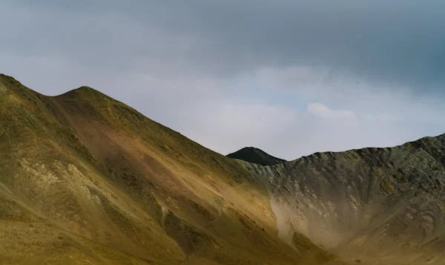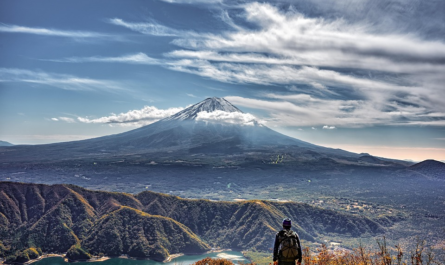Mount Rigi often called the Queen of the Mountains, has charmed the hearts of travelers, poets, and writers for centuries. Located in the heart of Switzerland, this majestic peak offers breathtaking views of the Alps, serene lakes, and lovely Swiss villages. Over the years, Mount Rigi has been immortalized in literature, inspiring poets and novelists to craft stories and verses celebrating its beauty. In this article, we will explore how Mount Rigi has influenced literature, from classical poetry to modern storytelling, highlighting notable works and authors who found inspiration in this iconic landscape.
The Romantic Appeal of Mount Rigi
The appeal of Mount Rigi is deeply intertwined with the ideals of the Romantic movement, which celebrated the power of nature to evoke deep emotional responses and a sense of the sublime. Romantic writers and poets sought to connect with the natural world as a means of exploring the human spirit and finding beauty in untamed landscapes. Mount Rigi, with its towering presence and ever-changing vistas, fit perfectly into this vision of nature as a reflection of internal emotional states. Its mist-covered peaks, quiet lakes, and sweeping views of the Swiss Alps and surrounding valleys became symbols of both the vastness and serenity of the natural world, inspiring literary works filled with awe and introspection.
In Romantic literature, Mount Rigi was often portrayed as a space for reflection, where the sublime beauty of nature could offer solace from the chaos of everyday life. The mountain’s tranquility provided a sanctuary where individuals could disconnect from societal pressures and engage in profound contemplation. Its image as a place of escapism and peace resonated with the works of writers who sought a retreat from the industrialized world. Through their words, Mount Rigi became a symbol not just of physical elevation but of spiritual and intellectual ascent.
One of the most notable literary figures to visit Mount Rigi was the American writer Mark Twain. In his famous travel book A Tramp Abroad (1880), Twain describes his journey to the top of the mountain with a mix of admiration, humor, and self-deprecating wit. While Twain is known for his sharp humor, his account of Mount Rigi reveals his genuine appreciation for the mountain’s majestic beauty. He is both awe-struck by the sweeping views and, at times, skeptical about the tourists’ romanticized notions of the mountain. Twain’s account is peppered with comical observations, particularly regarding the discomforts of the journey, yet beneath the humor, there is a genuine acknowledgment of the grandeur and inspiration the mountain provides.
Twain’s words reflect the enduring nature of Mount Rigi’s appeal, where it remains both an object of literary fascination and a place of genuine emotional impact. His blend of humor with reverence exemplifies how the mountain can evoke both light-hearted and profound reactions, allowing it to transcend mere physical beauty and become a literary landmark. Twain’s A Tramp Abroad thus immortalized Mount Rigi as more than just a natural wonder—it became a symbol of the tension between the idealized vision of nature and the often humorous realities of experiencing it.
This mix of beauty, humor, and introspection in Twain’s writing illustrates the mountain’s versatility as a muse, capable of inspiring a range of emotional responses. The mountain continues to attract writers who are drawn to its timeless charm, ensuring that its place in literary history remains solidified as a beacon of the Romantic spirit and a symbol of nature’s power to stir the imagination.
Mount Rigi in Poetry
Poetry has long been a medium through which writers express admiration for natural wonders, and Mount Rigi is no exception. Several poets have woven the mountain’s splendor into their verses, capturing its ethereal beauty and the emotions it evokes.
Albrecht von Haller and the Swiss Alps
The Swiss poet Albrecht von Haller, often regarded as one of the pioneers of Alpine poetry, included imagery of Mount Rigi in his works. His poem Die Alpen (1732) paints a vivid picture of the Swiss landscape, extolling the purity and grandeur of the mountains. Though not exclusively focused on Rigi, his poetry contributed to the perception of the Swiss Alps as a source of artistic inspiration.
Johanna Spyri’s Literary Tribute
While Johanna Spyri is best known for Heidi, her writing often reflects a deep appreciation for Swiss nature. Mount Rigi, with its pastoral beauty and serene atmosphere, aligns with the themes of simplicity and harmony found in her works. Although Heidi does not directly reference Rigi, the novel embodies the same admiration for Switzerland’s mountains that inspired poets and authors.
Mount Rigi in Travel Literature
The 19th century saw a rise in travel literature, with Mount Rigi becoming a popular destination for literary figures. With the introduction of the Rigi Railway in 1871, Europe’s first mountain railway, authors and travelers found it easier to reach the summit, leading to a surge in travel memoirs and reflections on its beauty.
J.M.W. Turner and the Visual Poetry of Rigi
Though primarily a painter, J.M.W. Turner’s works on Mount Rigi had a poetic quality that influenced literary descriptions of the mountain. His watercolor paintings, such as The Blue Rigi, and Sunrise, inspired writers to describe the mountain’s colors and moods with poetic eloquence. Many travel writers of the 19th century adopted similar descriptions, portraying Rigi as a dreamlike realm of mist, light, and shadow.
Modern Literary References
Even in contemporary literature, Mount Rigi continues to appear in novels and travel essays. Writers exploring themes of self-discovery and adventure often use the mountain as a metaphor for personal growth and enlightenment.
Hermann Hesse and the Spiritual Journey
Hermann Hesse, known for his philosophical novels, referenced the Swiss landscape in his works. While not directly centered on Mount Rigi, his themes of nature, solitude, and inner peace resonate with the imagery associated with the mountain. Readers of Siddhartha and Steppenwolf may find parallels between Hesse’s depiction of nature and the tranquility of Mount Rigi.
The Enduring Legacy of Mount Rigi in Literature
Rising majestically in the Swiss Alps, the mountain’s panoramic vistas stretch across lakes, valleys, and snow-capped peaks, offering an idyllic setting that stirs the soul and the imagination.
For centuries, its unique landscape has found its way into literature, from the travel accounts of early adventurers to the romantic verses of poets who sought to capture the grandeur of the Swiss Alps. The German Romantic poets, in particular, found themselves drawn to Mount Rigi, with figures like Johann Wolfgang von Goethe and Heinrich Heine visiting its summit to meditate on the sublime connection between nature and human experience.
The mountain also holds a special place in modern storytelling. Its serene environment and the gentle play of light across the horizon have inspired contemporary writers to weave narratives that explore themes of solitude, self-reflection, and the profound sense of peace that only nature can provide. The vivid imagery of Rigi’s changing weather, its soft slopes dotted with Alpine meadows, and its winding trails create a vivid canvas for storytelling, evoking both nostalgia and a sense of timelessness.
Moreover, the sense of spiritual tranquility that Mount Rigi evokes has led to its exploration in more philosophical and introspective works, with writers often reflecting on human existence, nature’s role in our lives, and the fleeting passage of time. Rigi’s reputation as a retreat for the mind and spirit continues to inspire new generations of literary minds, ensuring that its place in artistic expression is deeply woven into the fabric of literary history.
With each season, the mountain transforms—blanketed in snow during the winter, lush with wildflowers in the summer—which ensures that writers and poets can continuously find fresh perspectives and new inspiration. As a result, Mount Rigi remains an enduring muse, inviting creative minds to pause, observe, and, through their words, share the profound beauty of its landscapes with the world.
From the poetic verses of Albrecht von Haller to the humorous observations of Mark Twain, Mount Rigi has played a significant role in literature. It has served as a muse for countless authors, symbolizing beauty, introspection, and the sublime. As new generations of writers explore the charm of this Swiss wonder, Mount Rigi’s literary legacy is sure to endure, inspiring stories and poems that celebrate its timeless majesty.



